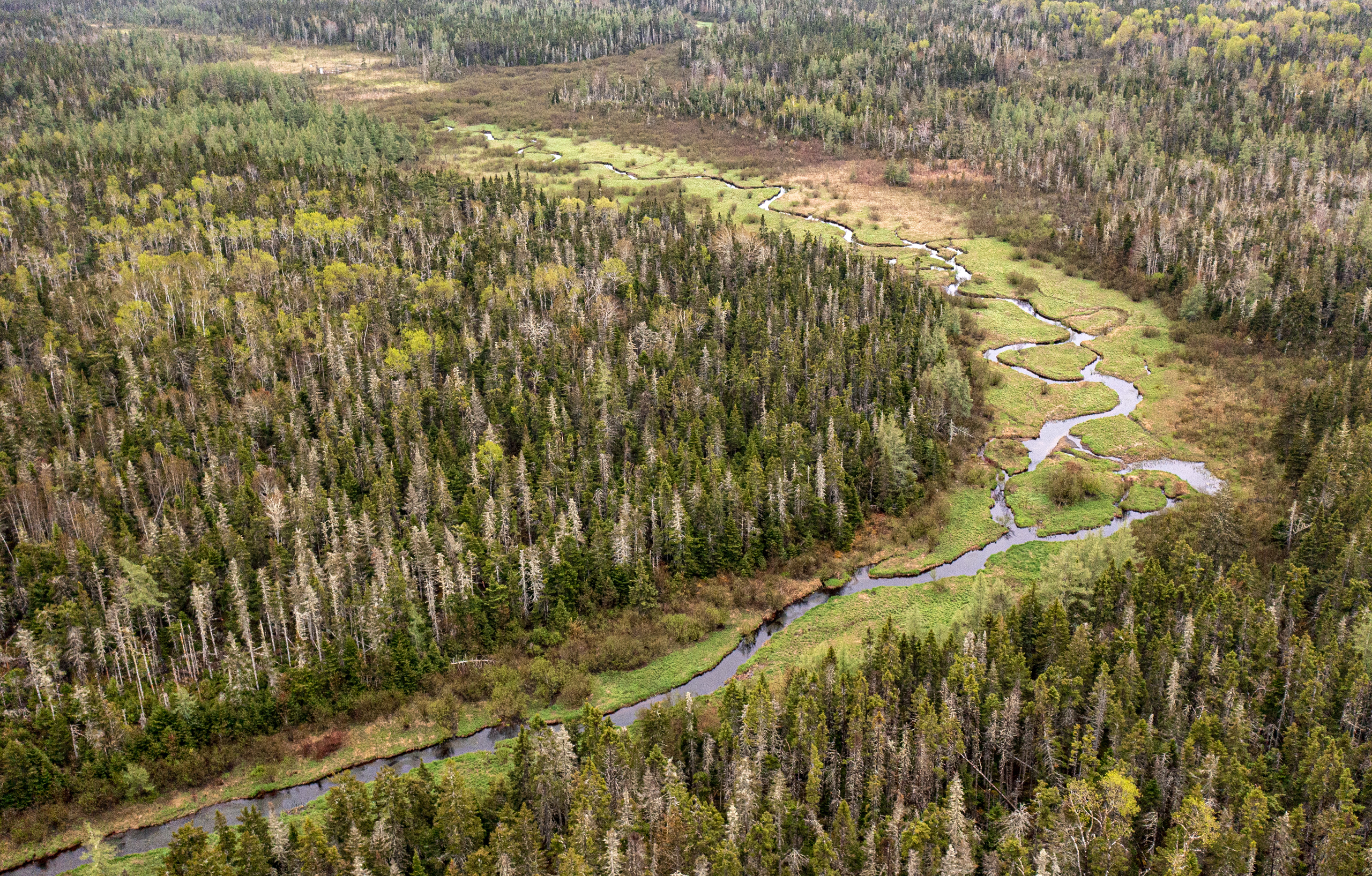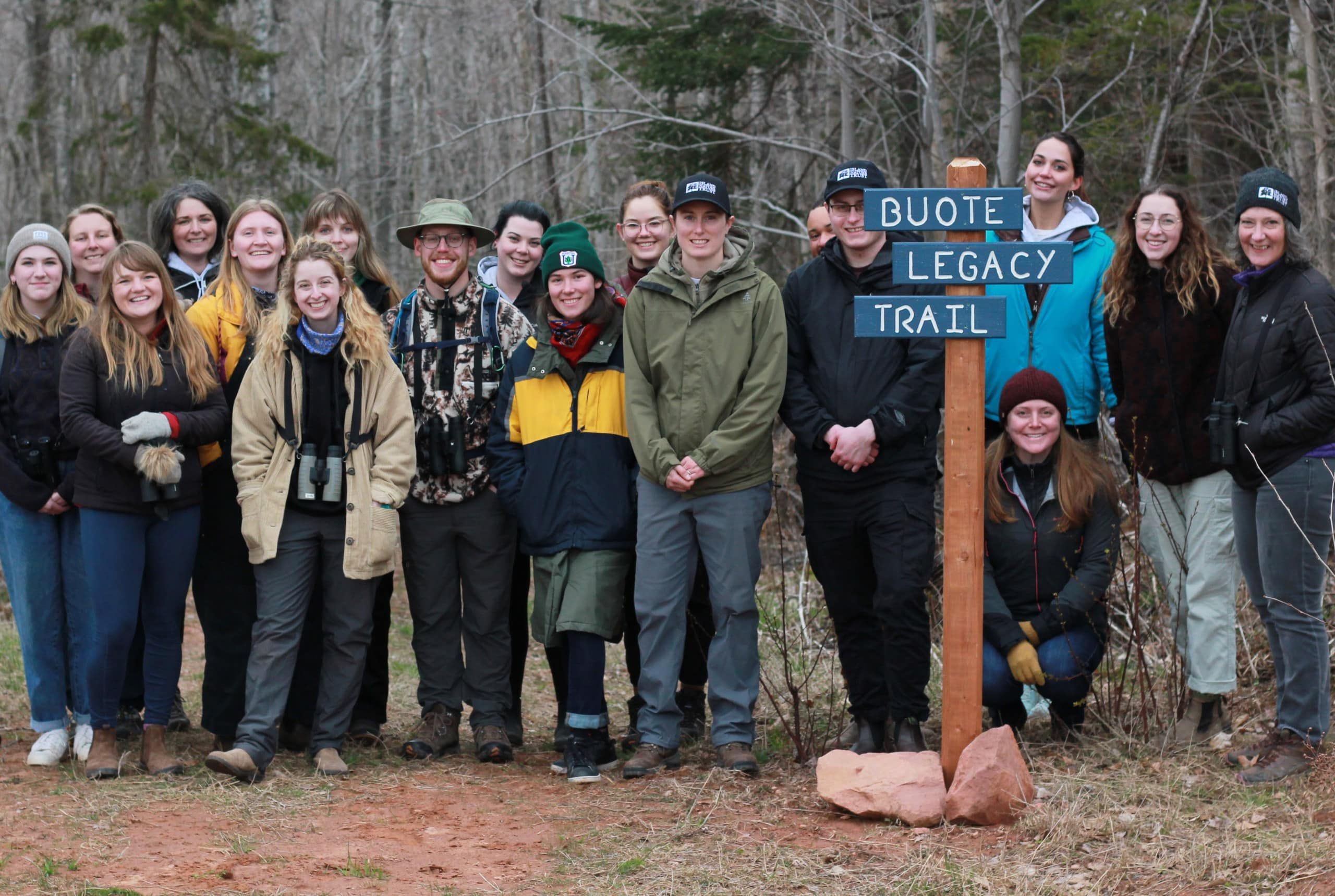Although Prince Edward Island is the smallest province in Canada, many call it home. This small Island boasts a large variety of landscapes, forests, rolling fields, rivers, wetlands, and beaches, all of which enhance the Islanders’ attachment to the land. The Island is roughly 85% privately owned, and many of the landowners are long-term residents or visitors with special ties to PEI’s natural beauty. For those with strong ties to the Island and its natural features, it is not hard to see that the pressure of development is decreasing the Island’s natural spaces; and for some, the need to conserve these areas for future generations is evident.
In the case of the Stuart Memorial Woodland Natural Area, protection began with the love and passion of one of our valuable donors – Kathy Stuart. Born in 1950, Kathy was raised in Whim Road, a small community situated south of Montague in Kings County, Prince Edward Island (PEI). Kathy now lives in Meadowbank, PEI, where she has been happily settled with her spouse of 40 years. Throughout Kathy’s life, she acquired four degrees, including a Masters in Island Studies from the University of Prince Edward Island. In 2010, Kathy won a major scholarship to attend the Australian National University in Canberra as a postgraduate student in environmental history, with a focus on Island biogeography.
Kathy continued to study for her Ph.D. for two years before her retirement in 2012. Now, Kathy spends her time volunteering as Past Chair of the PEI Woodlot Owners Association, being a step-grandmother of four, and expressing her creativity through writing, watercolour painting, and quilting.
Kathy’s ties to Prince Edward Island stem from her ancestors, Selkirk pioneers from the Isle of Skye who originally settled in Belle River, PEI, around 1803. Before Confederation in 1867, the Crown granted Kathy’s ancestors properties in Whim Road. By 1908, Kathy’s paternal grandparents owned a 150-acre farm about one kilometre from where Kathy grew up.
In the late 1940s, Kathy’s parents built their home on a 76-acre parcel just down the road from her grandparents; their family home was a labour of love, constructed from lumber harvested using a horse and sleigh.
Over the years, Kathy spent much of her time forming a connection with nature, harvesting firewood, blueberries, maple sap, and fishing trout from the Sturgeon River that runs through the property. During the summer months, Kathy’s favourite uncle would visit from Ontario, and they would build trails together, stopping now and then for a drink from “Toothache Spring” – a natural bubbling spring that feeds into that River. Some of Kathy’s most fond memories were spent atop a tall red spruce: she explains, “My favourite escape as a child was to the top of a very tall tree that stood alone, way above the treetops; it may have been a long-lived red spruce. From my perch, I could see for miles around, including St. Mary’s Bay to the east where Panmure Island is located”.
Kathy’s father, Leslie Stuart, was a renowned fiddler, WWII war veteran, and a history teacher at Montague Regional High School. Shortly after his retirement, Leslie passed away in 1975, leaving the estate to his wife, Mary Stuart, where she continued to live until her passing in 2004. Kathy described her mother as “an amateur naturalist who loved the outdoors, always discovering new things about the natural world under her stewardship”.
In addition to the original homestead, Mary acquired three neighbouring properties containing woodland and wetland, for a total of 255 acres, so that she could protect the original homestead from further development, this would later become the Stuart Memorial Woodland Natural Area, in their memory. Together, Kathy and her mother stewarded this property with the help of the provincial Forest Enhancement Program (FEP).
Along with her brother, Bob, Kathy inherited her grandparent’s 150-acre “up the road” property in 1988. Although he lived in Nova Scotia, Bob was active in the development of a program with the Cardigan Fish Hatchery to grow naturalized trout fingerlings in Stuart’s Dam which was on the North branch of the Sturgeon River that flowed through their property. Kathy became more active in the management of the resource-rich woodland property after Bob passed away in 1996. Kathy’s agreement with the provincial Forest Enhancement Program allowed her to hire a local woodsman who genuinely respected Kathy’s goals to preserve biodiversity and protect wildlife. When Kathy inherited her mother’s woodland in 2002, she reluctantly sold her grandparents’ property “up the road” to a local relative who wanted to live in the community and would provide quality stewardship for the land.
From a young age, Kathy was aware of the strain that development was putting on natural areas and understood the need to preserve them. In 1988, when the Natural Areas Protection Act (NAPA) was first introduced, Kathy was excited about the possibilities to protect the natural features of her land in perpetuity. The NAPA prohibits development and subdivision, so when the time came for Kathy to pursue formal protection of her parent’s property to ensure its perpetual protection, she subdivided the old homestead from the rest of the property and sold it to a young Island family. It took several years of working with biologists and staff at the Forestry Department, but by 2017, the four parcels that made up the property became designated under the NAPA in her parents’ memory. Once that was done, Kathy decided to donate the Stuart Memorial Woodland Natural Area to Island Nature Trust sooner rather than after her own passing. Since Kathy had prioritized protection and sustainable stewardship over keeping the property in the family for generations, donating the property to Island Nature Trust seemed like a “No brainer.”
Kathy’s story is one of many – and her contributions are priceless. Regardless of your goals, there are options for those who want to protect the Island’s natural ecosystems. Whether you want to actively steward your land by increasing biodiversity and resilience or allow the land to naturalize passively; if you want to protect your land and pass it down for future generations to enjoy or donate later, it is easier when we work together.
Featured Article: Private Landowner’s Frequently Asked Questions



Ways To Protect Your Land
Private Stewardship
You can retain ownership of the land and still place it under NAPA protection. Our resource guide “Protecting Natural Places in Prince Edward Island”’ provides more detail on this option.
Donate or Sell Your Land
For those who are able, the act of giving land to a land trust so that it may be protected is the ultimate in generosity. Island Nature Trust profoundly appreciates anyone who considers such a gift.
Get in touch
Connect with our team

Sign up
To Our
Newsletter
Be the first to know about
future events, news and
campaigns.
Follow Us
#givingbacktonature

